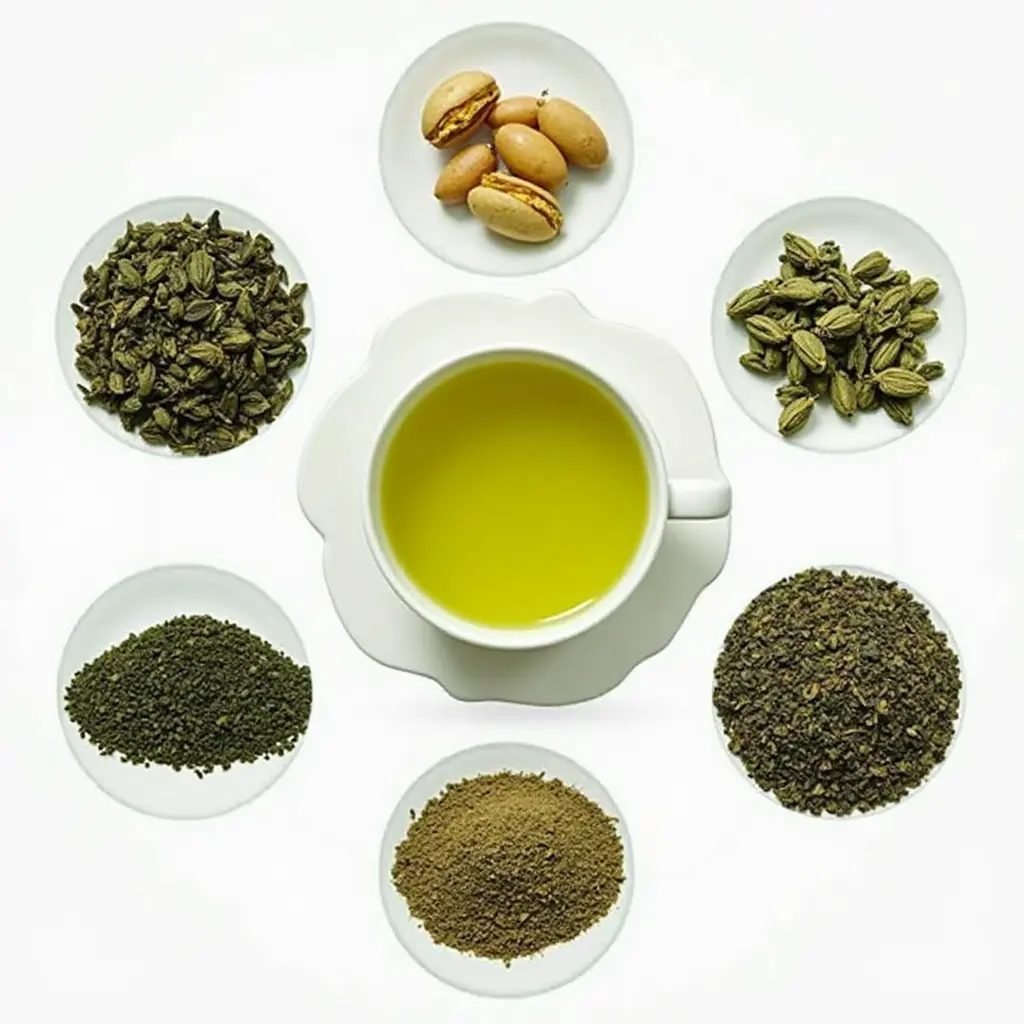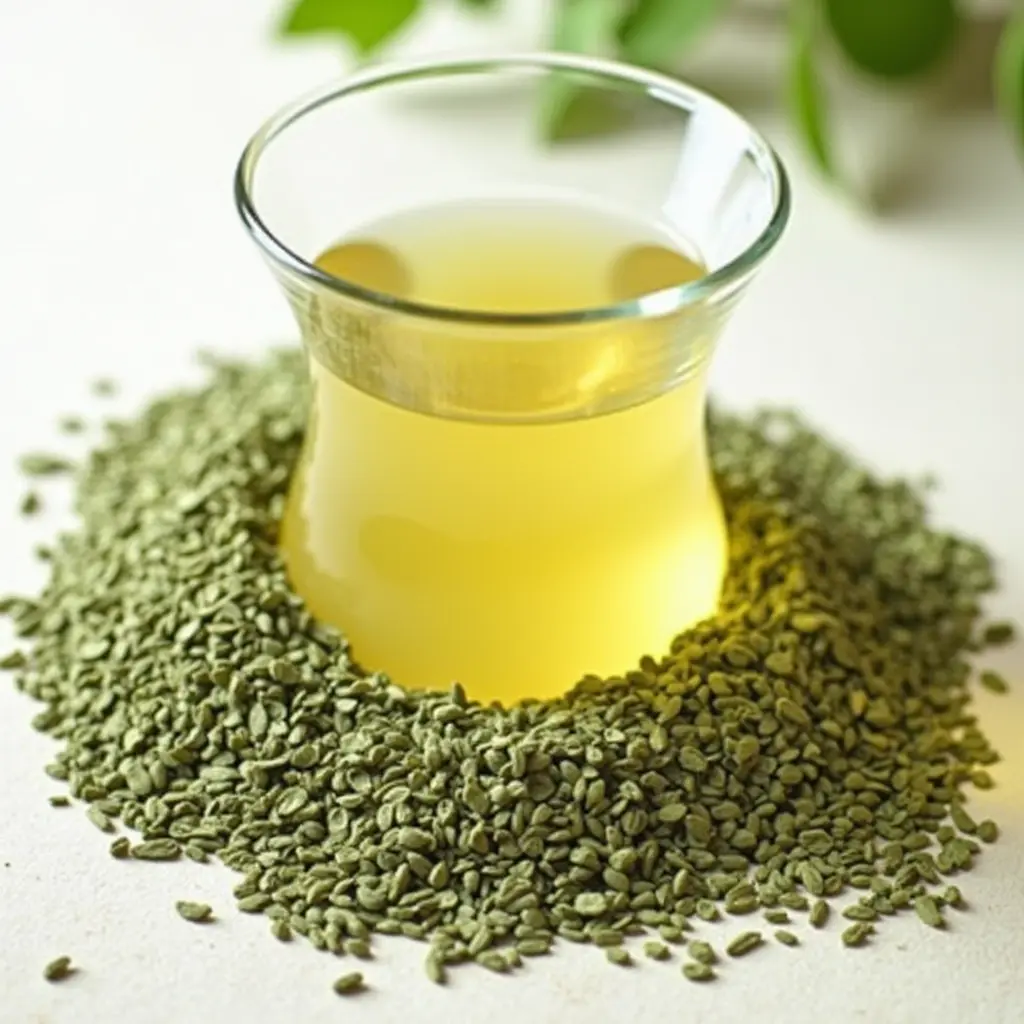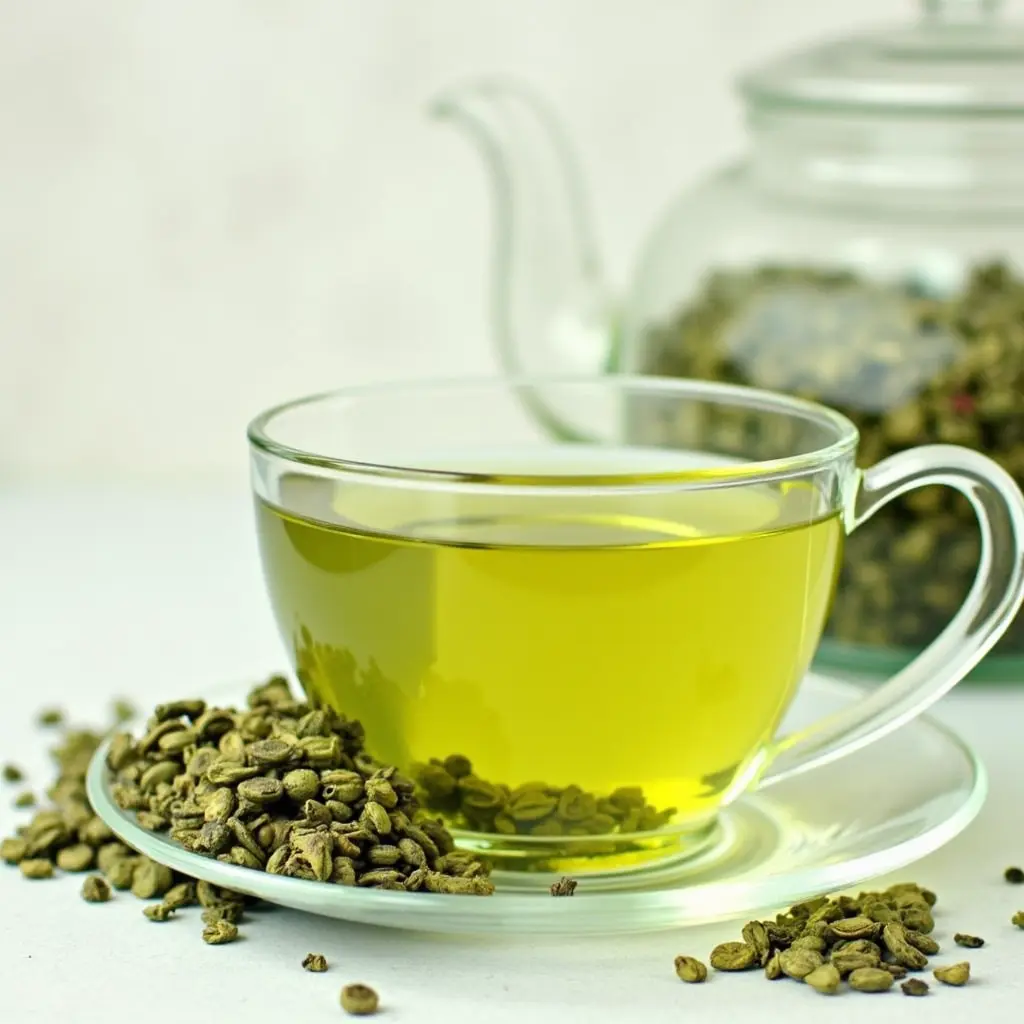Green tea is cherished worldwide for its distinct flavor and numerous health benefits. What are the common ingredients in green tea that make it so special? But what are the common ingredients in green tea that make it so special? This article delves into the natural components of green tea, exploring the unique ingredients that contribute to its flavor, aroma, and health benefits.
Introduction to Green Tea
For more information on the health benefits of green tea, you can visit Healthline’s guide to green tea benefits.
Green tea has been a popular beverage for centuries, with its roots tracing back to ancient China. Ancient Chinese people consumed green tea for its medicinal properties, and over 4,000 years later, it remains a favorite beverage worldwide, particularly in Japan, China, and South Korea. Green tea symbolizes culture and ceremony while also serving as a major wellness product, thanks to its rich nutritional profile.
Green tea’s global popularity has surged in recent years, partly due to the growing awareness of its health benefits. Its refreshing taste and powerful natural compounds that promote well-being make it a staple in both traditional and modern diets. To understand what makes green tea so remarkable, we need to explore its primary ingredients and their effects.
Explore green tea shots as a fun twist on traditional green tea beverages.
What Are the Common Ingredients in Green Tea Leaves?

Green tea leaves contain various natural compounds, each contributing to the overall properties and benefits of the beverage. These compounds include catechins, amino acids, caffeine, antioxidants, chlorophyll, flavonoids, vitamins, and minerals. They play roles in both flavor and aroma, as well as the health benefits associated with green tea.
Green tea’s nutritional profile stems from the minimal processing it undergoes. Unlike black or oolong tea, which are fermented, green tea leaves are steamed or pan-fried shortly after harvest to prevent oxidation. This preservation of natural compounds results in a high concentration of nutrients and bioactive substances that set green tea apart from other types of tea.
Learn about a savory pairing option to complement your green tea experience.
Catechins: Common Ingredients in Green Tea
To learn more about catechins and their impact on health, check out this article by WebMD.
Catechins, a type of antioxidant, are abundant in green tea. These natural compounds belong to the flavonoid family and contribute to many of green tea’s acclaimed health benefits. The most potent catechin in green tea is epigallocatechin gallate (EGCG), known for its anti-inflammatory and antioxidant effects. Other catechins found in green tea include epicatechin (EC), epicatechin gallate (ECG), and epigallocatechin (EGC).
Catechins significantly support cardiovascular health by reducing oxidative stress and improving blood circulation. Additionally, they aid in weight management by boosting metabolism and supporting fat oxidation. These compounds make green tea an excellent choice for improving overall health and wellness.
Amino Acids: Key Ingredients in Green Tea
Green tea contains several amino acids, most notably L-theanine. This amino acid, unique to tea, contributes significantly to the characteristic umami flavor of green tea. L-theanine promotes relaxation while balancing the stimulating effects of caffeine, resulting in a relaxed yet alert state. This blend of relaxation and focus makes green tea a preferred beverage during work or study.
L-theanine also enhances cognitive function. Studies have found that this amino acid improves attention, memory, and reaction time, especially when combined with caffeine. L-theanine also promotes better sleep quality, making green tea suitable for different occasions throughout the day.
Caffeine: A Common Ingredient in Green Tea
Green tea contains caffeine, albeit in smaller quantities compared to black tea or coffee. On average, a cup of green tea contains about 20-45 mg of caffeine, which is considerably less than the 95 mg typically found in coffee. This moderate caffeine content provides a gentle energy boost without causing the jitters or crashes often associated with coffee consumption.
The combination of caffeine and L-theanine in green tea results in a stable, sustained alertness compared to coffee. This makes green tea popular among individuals sensitive to caffeine who want a mild energy lift throughout the day.
Antioxidants: Common Ingredients in Green Tea
For further reading on antioxidants and their role in health, see Mayo Clinic’s guide on antioxidants.
Green tea is loaded with antioxidants, which are essential for maintaining cellular health. Antioxidants help neutralize free radicals—unstable molecules that damage cells and contribute to aging and disease. The catechins found in green tea, particularly EGCG, are among the most powerful antioxidants and have been linked to reduced inflammation, improved heart health, and enhanced immune function.
Regularly drinking green tea helps support the body’s defense against oxidative stress, which is a major contributor to chronic diseases like heart disease, diabetes, and cancer. These antioxidant properties make green tea a “superfood” and a key component of a healthy diet.
Chlorophyll: An Important Ingredient in Green Tea
Chlorophyll is an important ingredient in green tea, contributing to its vibrant green color and offering numerous health benefits. It acts as a natural detoxifier, cleansing the body of toxins and supporting liver function. These detoxifying properties make green tea an excellent choice for promoting overall health and natural detoxification.
Chlorophyll also influences the appearance of green tea, giving it a bright, appealing green hue. This natural pigment is more prevalent in certain types of green tea, such as matcha, known for its intense green color and higher chlorophyll content.
Flavonoids: Essential Compounds in Green Tea
Flavonoids are plant compounds that contribute to green tea’s flavor and aroma. They also enhance the antioxidant properties of the beverage. Flavonoids, including catechins, interact with other compounds in green tea to produce its characteristic taste, ranging from mildly sweet to slightly astringent, depending on the type of green tea and brewing method.
These compounds are also beneficial for heart health, as they help improve blood vessel function and reduce the risk of cardiovascular diseases. Green tea’s flavonoid content is one of the reasons it is recommended as part of a heart-healthy diet.
Vitamins and Minerals: Common Ingredients in Green Tea
Green tea contains various vitamins and minerals that contribute to its nutritional value. Notable vitamins include Vitamin C, which supports immune function, and Vitamin B2 (riboflavin), which plays a role in energy metabolism. These vitamins, though present in small amounts, add to green tea’s health-promoting properties.
Green tea also contains essential minerals like potassium, magnesium, and calcium. Potassium helps regulate blood pressure, while magnesium is important for muscle function and bone health. These vitamins and minerals enhance green tea’s reputation as a well-rounded, beneficial beverage.
Polyphenols: Important Ingredients in Green Tea
Polyphenols, including catechins and flavonoids, are abundant in green tea and contribute to its antioxidant properties. They help protect the body from oxidative stress and reduce the risk of chronic diseases such as heart disease, diabetes, and cancer.
Green tea’s polyphenol content sets it apart from other types of tea, such as black or oolong tea, which undergo fermentation that reduces these beneficial compounds. The preservation of polyphenols makes green tea a healthier option compared to other tea varieties.
Natural Oils: Ingredients in Green Tea

The natural oils in green tea leaves contribute to its delicate fragrance and flavor. Minimal processing helps preserve these oils, maintaining the fresh and aromatic qualities of green tea. High-quality green teas are known for their complex, nuanced aromas due to the presence of natural oils.
Proper storage, such as keeping green tea in an airtight container away from light and moisture, helps protect these oils and ensures the tea retains its full flavor profile.
The Role of Water in Green Tea
Water plays a crucial role in green tea preparation, as it extracts natural compounds from the tea leaves during infusion. The temperature and quality of the water significantly impact the tea’s flavor. Ideally, green tea should be brewed with water between 160°F and 180°F to avoid bitterness and bring out the leaves’ delicate flavors.
Water also activates various compounds in green tea, including catechins, amino acids, and antioxidants. High-quality water with the right mineral content can enhance the overall taste and experience of drinking green tea.
Tannins: Common Ingredients in Green Tea
Tannins are naturally occurring compounds in green tea that contribute to its slightly bitter and astringent taste. These compounds become more pronounced if green tea is over-brewed or brewed at too high a temperature. However, when brewed properly, tannins add a pleasant complexity to the flavor.
Tannins also provide several health benefits, including supporting digestion and providing antioxidant protection. However, excessive tannin consumption can interfere with iron absorption, so moderation is key.
Pectin: A Common Ingredient in Green Tea
Pectin, a soluble fiber, is found in green tea leaves. Though present in small amounts, pectin supports digestion and helps maintain healthy blood sugar levels. Pectin also contributes to green tea’s health benefits, particularly in digestive health.
Pectin influences the mouthfeel of green tea, giving it a smooth, satisfying texture. This is especially noticeable in certain green teas, such as matcha, which contains ground tea leaves and thus has a higher pectin content.
Carotenoids in Green Tea
Carotenoids are natural pigments in green tea leaves that contribute to their vibrant color. These compounds also provide health benefits, such as supporting eye health and reducing the risk of chronic diseases. Carotenoids act as antioxidants, neutralizing free radicals and protecting cells from damage.
The presence of carotenoids is particularly noticeable in matcha, where the entire leaf is consumed, providing a higher concentration of these beneficial pigments.
Fiber: A Common Ingredient in Green Tea Leaves
Green tea leaves contain a small amount of dietary fiber, particularly when consumed as matcha. Fiber is essential for maintaining digestive health, regulating bowel movements, and supporting a healthy gut microbiome. While brewed green tea contains minimal fiber, consuming the whole leaf in powdered form provides a more substantial fiber intake.
Including fiber in the diet is important for overall health, and consuming green tea in powdered form can conveniently boost fiber intake. This is one of the reasons why matcha is considered a nutrient-dense option compared to other green teas.
Volatile Compounds in Green Tea
Volatile compounds are responsible for green tea’s aroma and flavor. These compounds include aldehydes, esters, and alcohols, which release during brewing and contribute to the tea’s distinctive fragrance. The quality and quantity of volatile compounds depend on factors like the type of green tea, growing conditions, and processing methods.
High-quality green teas tend to have a more complex and appealing aroma due to a higher concentration of volatile compounds.
Natural Sugars in Green Tea
Green tea contains trace amounts of natural sugars, such as glucose and fructose. These sugars, though present in small quantities, contribute to the subtle sweetness detected in certain types of green tea, particularly those that are less processed.
Natural sugars balance the astringency of tannins, creating a harmonious flavor profile. This balance of sweetness and bitterness makes green tea enjoyable, even without added sweeteners.
Organic Acids in Green Tea
Organic acids, such as malic acid and citric acid, are present in green tea and contribute to its tangy flavor. These acids help balance the tea’s taste, adding a subtle tartness that complements the sweetness and bitterness of other compounds. Organic acids also enhance green tea’s antioxidant properties.
The presence of organic acids is more pronounced in certain types of green tea, such as sencha, known for its bright and tangy flavor. These acids contribute to green tea’s refreshing quality, making it a popular choice for a revitalizing drink.
Trace Elements in Green Tea
Green tea contains trace elements like manganese, zinc, and copper, which are essential for various bodily functions. Manganese supports bone health and metabolism, while zinc is important for immune function and wound healing. Though present in small amounts, these minerals contribute to green tea’s nutritional value.
Incorporating green tea into a balanced diet provides these trace elements, making it a well-rounded beverage that supports overall health and well-being.
FAQs About Green Tea Ingredients
What is green tea made up of?
Green tea contains various natural compounds, including catechins, amino acids (such as L-theanine), caffeine, antioxidants, chlorophyll, flavonoids, vitamins, minerals, tannins, pectin, carotenoids, volatile compounds, natural sugars, organic acids, and trace elements. These compounds contribute to the distinct flavor, aroma, and health benefits of green tea.
What are the ingredients in pure green tea?
Pure green tea consists of natural ingredients derived from the tea leaves, including catechins, L-theanine, caffeine, antioxidants, chlorophyll, flavonoids, and trace amounts of vitamins and minerals. It does not contain any added flavors, sweeteners, or preservatives, making it a healthy and natural choice.
What are the ingredients in green tea extract?
Green tea extract contains concentrated amounts of the active compounds found in green tea leaves, such as catechins (particularly EGCG), polyphenols, flavonoids, and caffeine. It is often used as a dietary supplement to provide the health benefits of green tea in a more potent form.
What does pure green tea contain?
Pure green tea contains a combination of catechins, L-theanine, caffeine, antioxidants, flavonoids, chlorophyll, natural oils, vitamins, minerals, tannins, and trace elements. These ingredients contribute to the unique flavor, aroma, and health-promoting properties of green tea.
